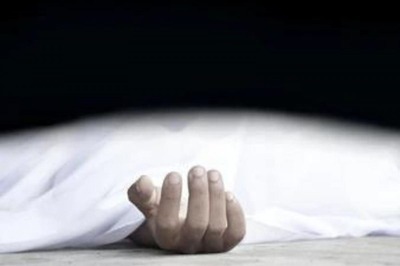
views
New Delhi: About 40 children have died in government hospitals in West Bengal in the past few weeks. This is not a statistic; this is – each one of these deaths is – a profound and wrenching tragedy. I could begin by blaming the impact of 34 years of Left Front rule and the mess the state health system is in – but I won't. Faced with such a human tragedy, the politics just doesn't matter.
To the parents and families who have lost their children, the policy debates are irrelevant, the jargon inconsequential, the proverbial big picture of no importance.
Their grief shuts out every external idea and excuse.
What sort of a society is it that leaves its youngest and most vulnerable citizens to suffer and die in agony, irretrievably damaged and killed by, in many cases, preventable causes? Each year, the world loses eight to nine million children (0-5 years). India accounts for one in five of these deaths. It is this larger context that we need to address.
In saying this, I am not trying to divert attention. The Trinamool Congress and its government are determined to take on the challenge of this 'larger context' – at least in our one state. There is a four-stage argument and charter of action for this.
First, West Bengal's health infrastructure – particularly rural health infrastructure – is in a shambles. There are issues of quality as well as quantity.
In 1961 – the year before the death of BC Roy, the only doctor to have sat as chief minister in Writers' Buildings – West Bengal had 29,067 hospital beds and Maharashtra had 19,090. In 2005, West Bengal had 59,110 hospital beds and Maharashtra had 96,762.
Today, each government hospital in West Bengal serves a population of 225,000 (2007-08 figures). This is the second worst ratio for any state in the country. By way of comparison, the number is 113,000 in Tamil Nadu, 134,000 in Kerala and 198,000 in Uttar Pradesh.
These are serious legacy issues. Chief Minister Mamata Banerjee is committed to intensive, time-bound health infrastructure augmentation. A new critical-care neo-natal unit in Kolkata's BC Roy Post-Graduate Institute for Paediatric Sciences has already become reality. It's a small step, and there are miles to go.
The government hopes to set up 36 more such units between now and March 31, 2012 – that's seven a month. Most of the incremental facilities will be outside Kolkata. This will reduce the concentration of patients in big Kolkata institutions and medical college-hospitals.
Second, the BC Roy Institute is a referral hospital. Only the worst, most precarious cases come there. As we saw in the past week, the little patients sometimes arrive too late to be saved, having travelled six or seven hours. The point is: why do we wait for them to come to such specialty hospitals at all?
There are 10 focus areas in the West Bengal Health and Family Welfare Department's "Plan of Action: 2011-15". Right on top is a resolve to "decongest tertiary care hospitals" and "reduce out‐of‐pocket expenditure for patients".
This is being done by establishing a hub-and-spoke model: with satellite centres, a proper referral chain and an efficient transport system for patients in genuine and dire need.
None of this will be credible unless it is both done and seen to be done. That is why the website http://wbhealth.gov.in is an exemplary government communication platform not only in West Bengal but, I would argue, in India. It records our state's healthcare battle in real time. The "OPD tracking system" is an online reckoner available to the citizen. It updates her on the number of patients at both big hospitals and sub-district health centres, and allows her to monitor doctor attendance on a daily basis.
Third, prevention must regain its primacy in our public-health strategy. Over the years, so many children in West Bengal have been allowed to die eminently preventable deaths simply because the authorities were too lazy to care – or to try a new approach. Examples stand out. Diarrhoea is the single-largest childhood killer in our country. There were 2.6 million cases of diarrhoea in West Bengal in 2006, much, much higher than any other state.
Some of the children who died this past week were reported to have suffered acute respiratory infection (ARI). Most life-threatening ARIs are pneumonia, an affliction that kills 12,000 children – one in four – in West Bengal every year, and is perhaps the leading cause of death in children under the age of five. It is telling that 73 per cent of all child deaths in the state occur outside a health facility. These are deaths that never make it to prime-time news. These are deaths we have to stop.
How do we prevent pneumonia? We need to ensure adequate nutrition for our children, reduce their exposure to smoke and indoor air pollution. We have to immunise them against the common causes of pneumonia: measles, pertussis, Hib, and pneumococcus.
The regimen is similar with diarrhoea. Children deserve clean water, sanitation, hygienic community conditions. Every child should have access to ORS (oral rehydration solution), the simple solution of salts and sugars that is crucial to a diarrhoea patient. We need to begin taking rotavirus vaccines, which have been shown to reduce mortality and hospitalisation from diarrhoea, where they are required most.
Finally, West Bengal needs to set itself lofty benchmarks. Safeguarding the state's future – the small children who are the human capital of tomorrow – is not just a policy goal, it is a moral obligation. Simply providing clean water and sanitary living conditions can make a difference. As a responsive government, these are the minimum we have to ensure.
We also need to embrace ambitious goals. In West Bengal, seven of 10 children have been fully immunised. Is that enough? Can the Trinamool government take that rate to 85-90 per cent in its five-year term, and achieve something only Kerala and Tamil Nadu have among major Indian states?
These are the conundrums to which we are seeking solutions. They represent an urgency we are committed to. It is the least we owe those 40 precious children.
The author is a Rajya Sabha MP from the Trinamool Congress, and a member of the Parliamentary Standing Committee on Health.


















Comments
0 comment